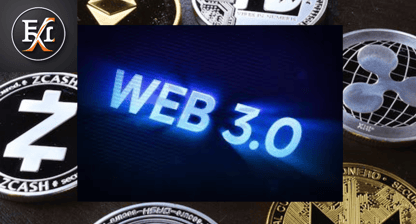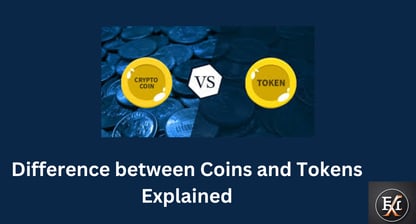Web 3.0 Coins


Web3 coins, also known as Web 3.0 tokens, are cryptocurrencies that facilitate the decentralized internet of the future, emphasizing blockchain technology, decentralization, and peer-to-peer networks. Here are some prominent Web3 coins and their key features:
1. Enjin Coin (ENJ)
Key Features:
Blockchain Gaming Platform: Enjin provides tools for game developers to integrate blockchain technology into their games.
NFT Support: Allows for the creation and management of non-fungible tokens (NFTs).
Marketplace: Users can trade digital assets using Enjin Wallet.
2. Decentraland (MANA)
Key Features:
Virtual World: Users can create, experience, and monetize content and applications in a virtual world.
Land Ownership: Uses MANA to purchase parcels of virtual land.
DAO Governance: Decentralized Autonomous Organization (DAO) for community governance.
3. The Sandbox (SAND)
Key Features:
Virtual Metaverse: Players can build, own, and monetize their gaming experiences.
NFT Integration: Uses NFTs to represent in-game assets.
Voxel Editor: Tool for creating voxel assets.
4. Axie Infinity (AXS)
Key Features:
Play-to-Earn Model: Players earn AXS by playing and winning battles in the game.
NFT-Based Creatures: Uses NFTs to represent Axies, which are unique creatures that players can breed, raise, and battle.
Governance Token: AXS holders can participate in governance decisions.
5. Gala Games (GALA)
Key Features:
Decentralized Gaming Ecosystem: Aims to create a decentralized gaming network.
Node Network: Players can run nodes to support the network and earn GALA tokens.
Game Portfolio: Includes various blockchain-based games.
6. Ultra (UOS)
Key Features:
Game Distribution Platform: Aims to provide a fair ecosystem for developers and players.
NFT Support: Allows for the creation and trading of in-game assets as NFTs.
Developer Tools: Offers tools for game developers to publish and monetize their games.
7. WAX (WAXP)
Key Features:
Blockchain for Digital Goods: Focuses on trading and virtual goods.
NFT Marketplace: Supports the creation and exchange of NFTs.
Eco-Friendly: Uses a delegated proof of stake (DPoS) consensus mechanism to reduce energy consumption.
8. Immutable X (IMX)
Key Features:
Layer-2 Scaling Solution: Built on Ethereum to provide scalable and instant transactions.
Zero Gas Fees: No gas fees for minting and trading NFTs.
Gaming Focus: Optimized for gaming and digital asset trading.
9. Chromia (CHR)
Key Features:
Blockchain Platform: Designed for decentralized applications (DApps), including games.
Relational Blockchain: Combines relational databases with blockchain technology.
Gaming Integration: Supports complex in-game economies and multiplayer experiences.
10. My Neighbor Alice (ALICE)
Key Features:
Farm and Build: A multiplayer builder game where players can own virtual islands, collect and build items.
Play-to-Earn: Players can earn ALICE tokens through gameplay.
NFT-Based Assets: Items and properties in the game are represented as NFTs.
These gaming coins and platforms are at the forefront of integrating blockchain technology into the gaming industry, offering new ways for players to interact, earn, and own digital assets.
Coins Vs Tokens


In the cryptocurrency space, "coins" and "tokens" are often used interchangeably, but they have distinct differences based on their underlying technologies and purposes.
Coins
Definition: Cryptocurrencies that operate on their own independent blockchain.
Purpose: Primarily used as a medium of exchange, store of value, or unit of account.
Examples: Bitcoin (BTC), Ethereum (ETH), Litecoin (LTC).
Tokens
Definition: Cryptocurrencies that are built on top of an existing blockchain using smart contracts.
Purpose: Used for a variety of purposes, including utility within a specific project, representing assets, or granting access to services.
Examples: Uniswap (UNI) on Ethereum, Chainlink (LINK) on Ethereum, USDT (Tether) on multiple blockchains.
Key Differences
Blockchain:
Coins: Have their own blockchain.
Tokens: Operate on an existing blockchain.
Use Cases:
Coins: Generally used as digital money.
Tokens: Can represent assets, access to services, or be used in decentralized applications (dApps).
Creation:
Coins: Created through mining or staking on their native blockchain.
Tokens: Created through smart contracts on platforms like Ethereum, Binance Smart Chain, etc.
Examples of Blockchains:
Coins: Bitcoin blockchain, Ethereum blockchain.
Tokens: ERC-20 tokens on Ethereum, BEP-20 tokens on Binance Smart Chain.
